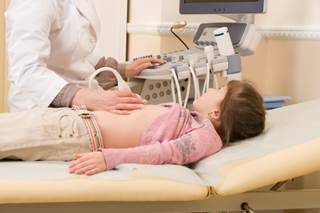Search for dialysis centres here
 Log in to explore the world's most comprehensive database of dialysis centres for free!
Log in to explore the world's most comprehensive database of dialysis centres for free!
| Most Pediatric Pyeloplasty Patients Have Imaging Within a Year - Renal and Urology News |
 |
 |
August 21, 2015
 Within first 12 months, 91% undergo at least 1 imaging study, most often ultrasound. (HealthDay News) -- Most patients are followed up after pediatric pyeloplasty, with ultrasound being the most common imaging modality, according to a study published in The Journal of Urology. Ryan S. Hsi, M.D., from Seattle Children's Hospital, and colleagues characterized trends in frequency and modality of postoperative imaging after open and minimally invasive pediatric pyeloplasty. Pediatric patients (aged 0 to 18 years) undergoing pyeloplasty between 2007 and 2013 were identified using the MarketScan database. Follow-up imaging was classified as functional or nonfunctional. The researchers identified 926 patients, of whom 30% underwent minimally invasive pyeloplasty. No postoperative imaging was available for 5.9% of patients. Most patients (91%) underwent at least 1 imaging study within the first 6 months postoperatively, and 24% underwent renography (functional imaging). The same number (91%) underwent at least 1 imaging study within the first 12 months postoperatively, most commonly ultrasound. Almost one-third of patients were not followed with imaging after 12 months. Most of the 71% undergoing imaging underwent ultrasound. On multivariate analysis, younger age and female gender were independently associated with frequent imaging. "Following pediatric pyeloplasty there is variation in modality and frequency of imaging follow-up," the authors write. "The majority of patients are followed with renal ultrasound, with less frequent use of functional imaging." One author disclosed financial ties to C-SATS Inc. Source |
 Professional dialysis recruitment
Professional dialysis recruitment
